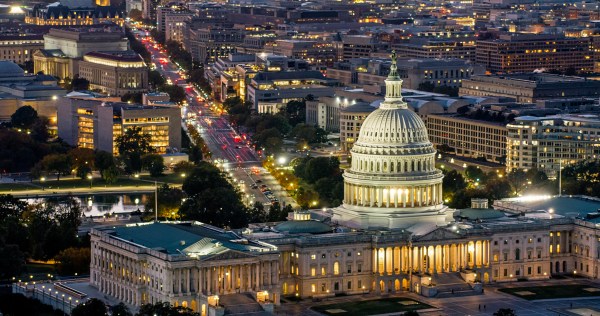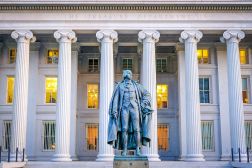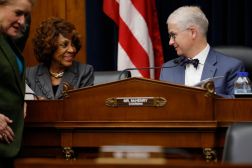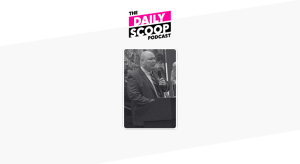Job satisfaction among feds falls to all-time low
Editor’s Note: This story has been updated to include a comment from NTEU.
An annual federal workforce survey found that overall federal employee satisfaction fell to its lowest levels since the poll launched in 2003.
According to the Best Places to Work
survey, put out by the Partnership for Public Service and Deloitte, the governmentwide score for overall satisfaction and commitment dropped by nearly a point, scoring 56.9 out of 100. This year marks the fourth straight year that satisfaction has dropped.
John Palguta, vice president for policy at the Partnership for Public Service, said federal employee engagement is critical because it’s linked to efficiency in government.
“It’s not about insuring we have happy employees — happy employees are a side benefit,” he said. “It’s about making sure we get work done. And all the research shows the more engaged an employee is, the more effective they’re going to me.”
To Palguta, the results of the survey were no surprise, given that the survey was conducted late last spring, when “visions of shutdowns were still fresh in people’s heads.” Budgets were tight, and workloads were increasing. Meanwhile, midterm election campaigning also was ramping up, bringing with it the usual antigovernment rhetoric, he said.
He said that while top senior leadership will get a lot of attention because of these results, Congress also has culpability because they control the purse strings through the appropriations process.
“There’s plenty of blame to go around,” he said.
The president of one of the largest federal employee unions, National Treasury Employees Union, issued a statement after the report was released saying the results of the survey were no shock.
“Low morale hurts the current workforce and will also hamper future recruitment efforts by making talented candidates think twice before taking federal jobs,” said NTEU National President Colleen Kelley. “Lack of adequate funding has led to hiring freezes, staffing shortages, growing workloads, cuts in performance-based awards and training, and diminished opportunities for career advancement.”
The survey found, among 10 subcategories, the largest decline was felt in the overall effective leadership score, which fell by 1.4 points to 50.4 . The results are in line with a
Military Times poll from this year, which found a significant drop in overall job satisfaction among members of the military. The survey also found a drop in confidence in the senior military leadership.
For the Partnership for Public Service survey, researchers used data collected by the Office of Personnel Management’s Federal Employee Viewpoint Survey, which was completed by nearly 400,000 federal workers. This new survey also includes responses from more than 15,000 additional employees. Researchers calculated the index based on the answers to three workplace satisfaction questions.
The survey includes information on 389 federal agencies and subcomponents, representing 97 percent of the federal executive branch workforce and many agencies in the legislative branch.
For federal IT sector managers or other technology-oriented government leaders looking at the survey results, Palguta said encouraging employees to find ways to do their job better can help improve engagement.
“High-tech organizations have a possible advantage if they tap into that creative spirit,” he said. Conversely, “one thing not to do is micromanage.” He pointed to NASA, which topped the list for this year’s Best Places to Work survey among
large agencies for the third year in a row. Palguta said it’s no mistake.

Astronaut Kevin Ford onboard the International Space Station holds a photocopy of NASA’s 2012 Best Places to Work award. (Credit: NASA)
“People think well NASA’s got a sexy mission, and they’ve got praise from the public so it’s easy for them — it’s not,” he said.
While NASA has been hit by cutbacks and the end of its space shuttle program, leadership has made encouraging employee engagement, innovation and work-life balance a priority. NASA was featured in a collection of
case studies the partnership put out last year that looked at how several agencies bolstered their rankings.
“One of the reasons they retain the high ranking is they actually foster and reward innovation,” he said.
The space agency received a job satisfaction and commitment score of 74.6. The Department of Commerce, which garnered the No. 2 spot, received a 68.7 score, and the third-place State Department scored 68.2.
The Federal Deposit Insurance Corp. once again took the top spot among
midsized agencies, with a 82.3 score. The Government Accountability Office, with 77.2, and the Smithsonian Institution, at 76.9, rounded out the top three.
The Surface Transportation Board had the highest score for
small agencies — and overall — with a 86.8 rating. The Federal Mediation and Conciliation Service, and the Peace Corps were also among the top small agencies. And, for the subagencies, the Office of the General Counsel at Federal Energy Regulatory Commission, the Patent and Trademark Office, and the Justice Department’s Environment and Natural Resources Division filled out the top three spots.
Looking ahead, Palguta said that with the midterm elections over and the low chance of another shutdown survey results might soon improve.
“Unless something else dramatic happens, I think there may be glimmerings that we may be getting close to bottom,” Palguta said.
More of FedScoop’s coverage on the Best Places to Work list:
Best places to work: Top 10 large federal agencies
Best places to work: Top 10 midsized federal agencies






